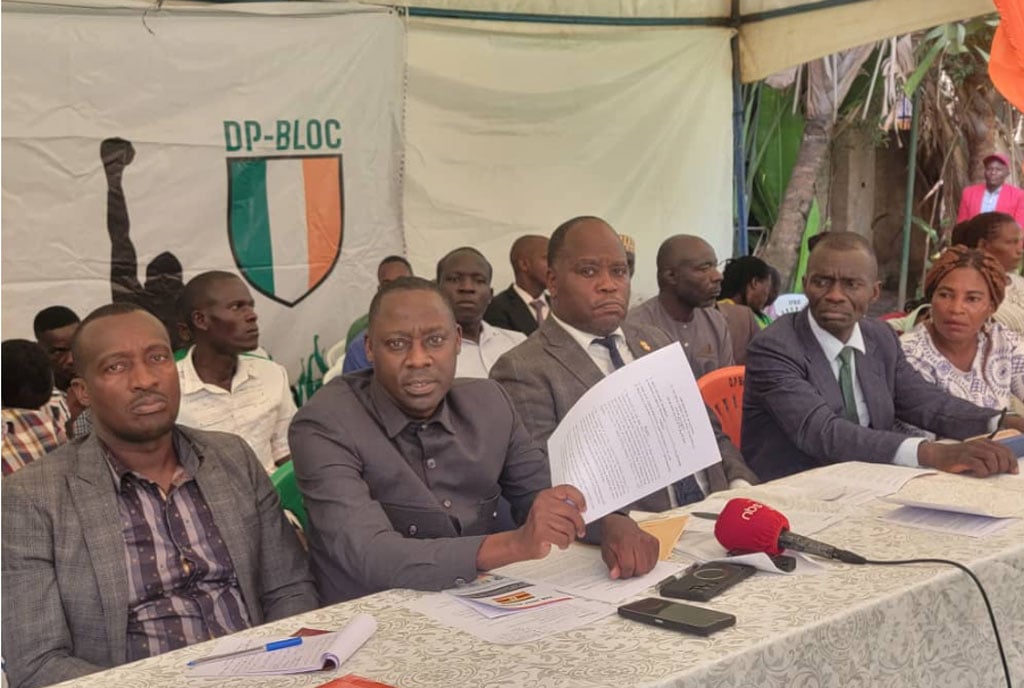Prime
What DP really stands for

What you need to know:
- Pages. The The book was first published in 2015, but its real time commentary on events that unfolded prior to that year makes it seem like it came out much earlier.
“In Uganda, the 1950s triggered an explosion of political party activity and witnessed the emergence of two powerful nationalist parties, with the Uganda National Congress (UNC) leading the way, followed by the Democratic Party (DP).
The latter won the elections in Uganda. In 1961, forming the first self-government in colonial Uganda,” reads part of the book’s description for Professor Samwiri Lwanga-Lunyiigo’s 232-page book titled ‘A history of the Democratic Party of Uganda: The First Thirty Years (1954-1984).’
The book was first published in 2015, but its real time commentary on events that unfolded prior to that year makes it seem like it came out much earlier.
Beyond its contemporaneity, Prof Lwanga-Lunyiigo’s book shows how the DP shaped Uganda’s political landscape and how it was in turn shaped by it.
Founded in 1954, the DP came into being a few years after Sir Winston Churchill’s infamous “Fulton Speech”, which was delivered on March 5, 1946, at Westminster College in Fulton. In the speech, Churchill declared: “From Stettin in the Baltic, to Trieste in the Adriatic, an iron curtain has descended across the continent,” and thereby formalised the Cold War and framed the geo-political landscape for the next 50 years.
Ugandan politicians, according to Prof Lwanga-Lunyiigo, were first embroiled in this Cold War whose chief protagonists were the USA and the Soviet Union. It all started when Semakula-Mulumba of the Bataka Union petitioned the United Nations Trusteeship Council through the Soviet Union in 1946. Then, later, future DP pooh-bah Benedicto Kiwanuka was accused of being a communist while still a student in London.
As ideological cleavages of that era cultivated the Ugandan political field, the DP was accused of being a “Catholic party”.
Accordingly, the Mengo Establishment played its cards close to its chest as it often dealt the DP a wrong hand by stacking clerical considerations against it which propagated the fiction, according to Prof Lwanga-Lunyiigo, that DP was a Catholic party. Prof Lwanga-Lunyiigo, however, goes to great pains to set a great store by the DP’s actual ideology and aims.
In the party’s 1960 manifesto, titled “Forward to Freedom”, the party’s platform could best be described as a centre or moderate party. Its founding was umbilically linked to the Christian Democratic parties of Europe, notably in West Germany.
To the uninitiated, Germany, thanks to the outcome of the Second World War and the realities of the subsequent Cold War, was divided into East and West. The former being part of the Soviet bloc and the latter, the US-led Western bloc.
At any rate, the DP hoped to create a welfare state, whose traditional orthodoxy points to a system whereby the state undertakes to protect the health and well-being of its citizens, especially those in financial or social need.
As far as foreign policy is concerned, the party, which was committed to the nationalist ideology of independence at the time, hoped to continue Uganda’s association with the Commonwealth comity of countries.
Furthermore, it aimed at assisting other dependent African colonies unshackle themselves of the yoke of foreign domination upon Uganda attaining its independence.
It also espoused non-aligned politics in order to chart a middle ground between East and West during the Cold War.
On the economic front, it further inhabited Middle Uganda with its espousal of a mixed economy and supported the Cooperative Movement as an engine of development.
What struck me about Prof Lwanga-Lunyiigo’s rendering of DP politics is that the more the party has changed, the more it seems to have stayed the same.
When the National Resistance Movement took the reins of power in 1986, it curated an inclusive ideological stance around the policy of broad-based government. By this token, the DP was invited to join the NRM.
“It seems that even before the National Executive Committee of DP took the decision to the join the NRM government some individual members of the DP (for instance Professor Ponsiano Mulema) had already been appointed to ministerial positions,” Prof Lwanga-Lunyiigo writes, adding, “DP did not negotiate her entry into the NRM government. There were no terms and conditions for this entry as a collectivity and this was a big mistake. DP members occupying high offices in the NRM government operated as individuals.”
Even today, the DP seems to exemplify the disjointed nature of Uganda’s body politic.
In fine, Prof Lwanga-Lunyiigo’s book offers an invaluable dimension to the party’s dynamics and also eloquently shapes its contours towards a better understanding of the party.




